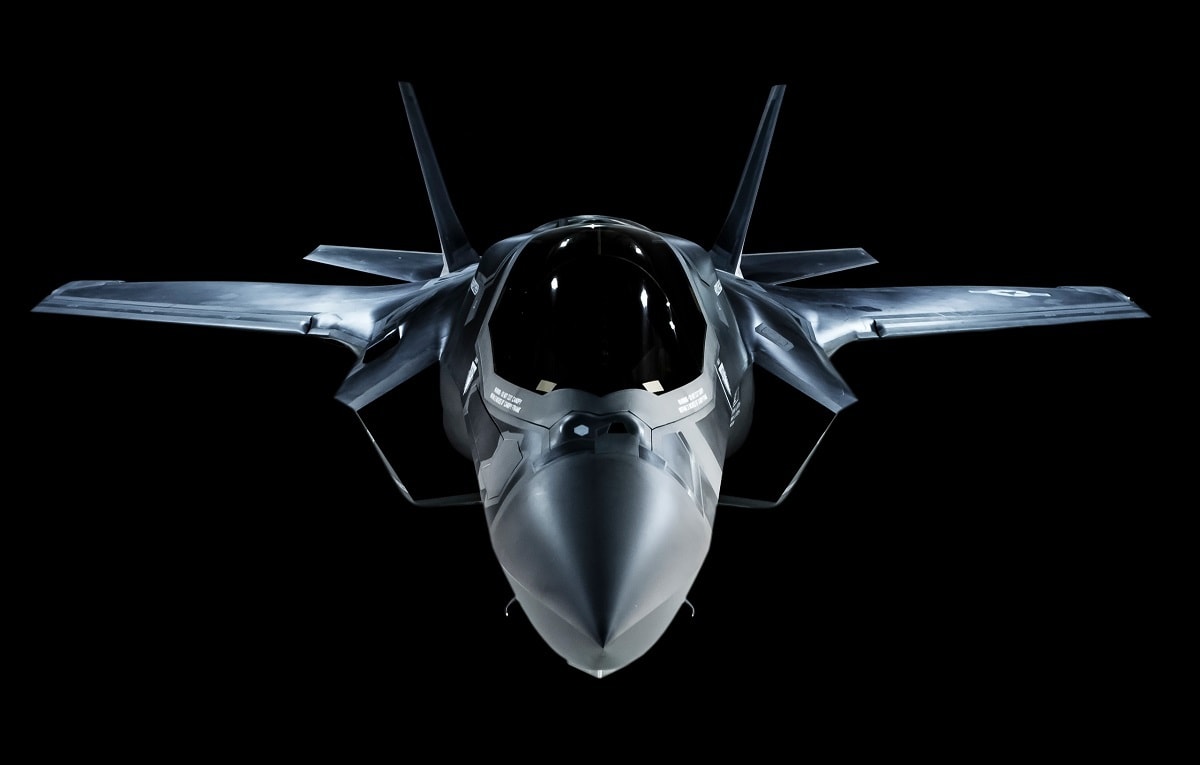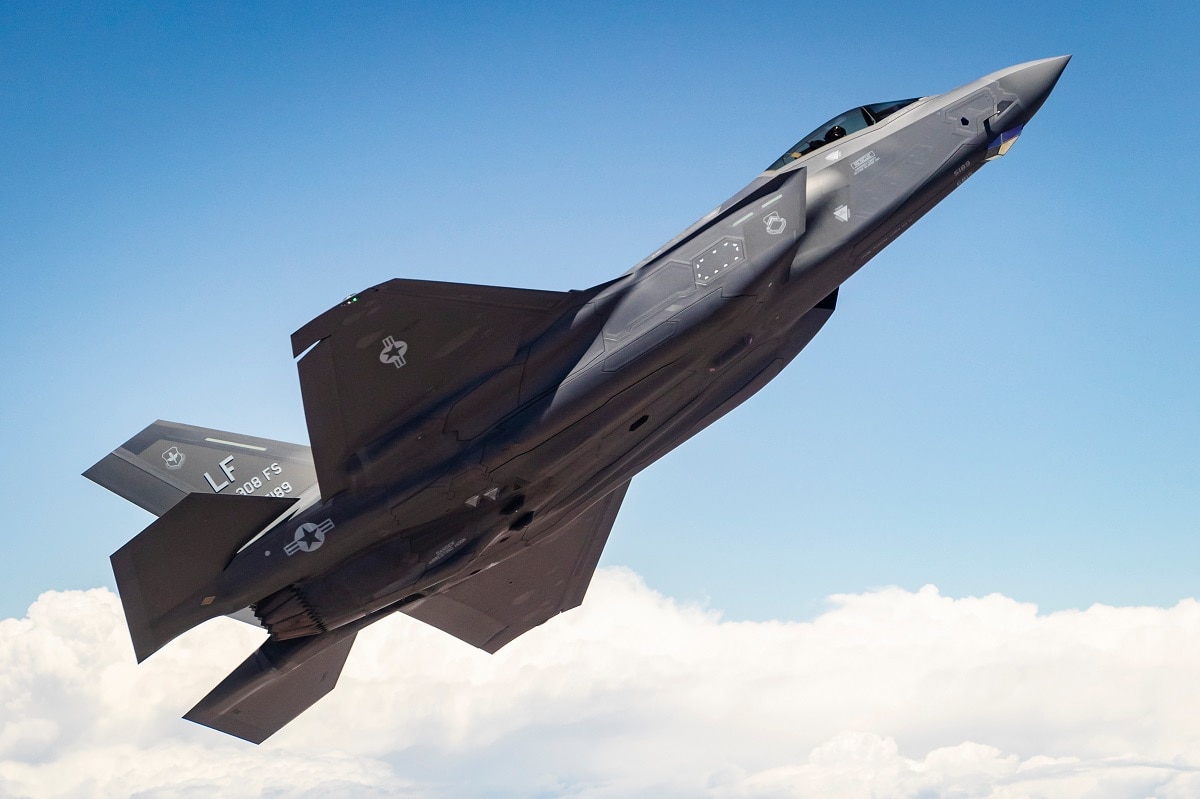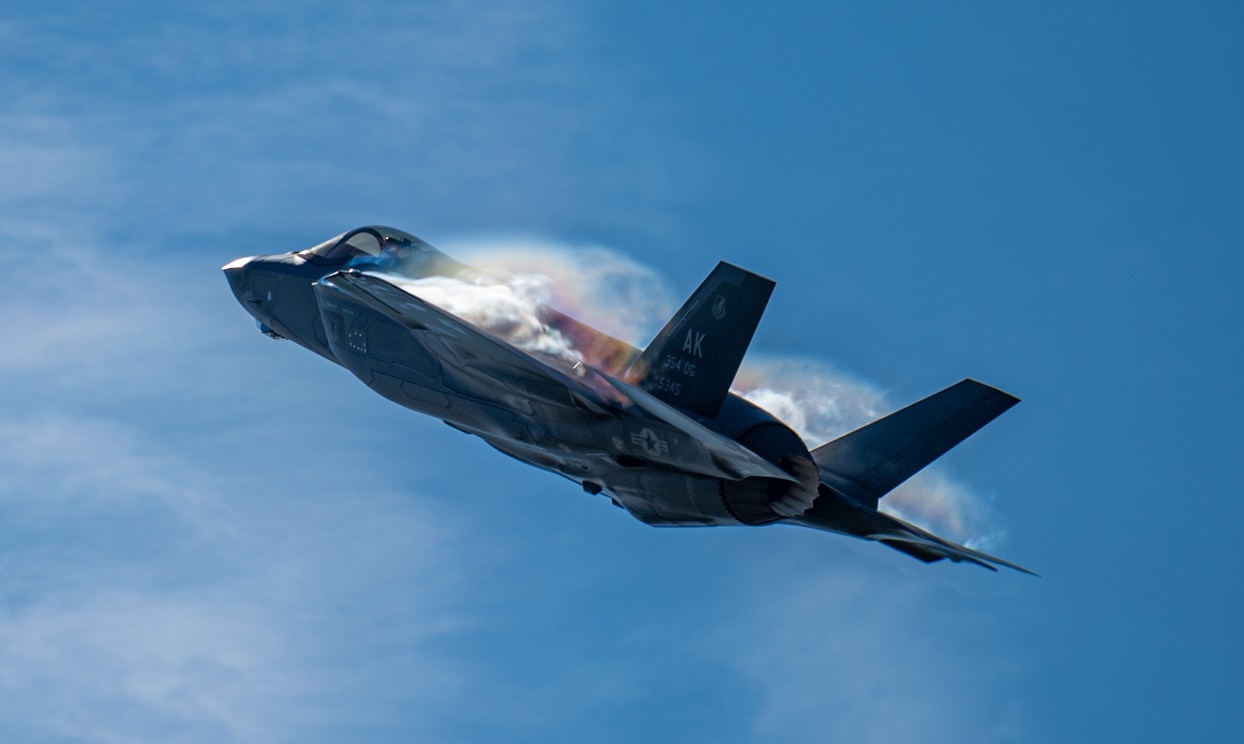Blue Flag 21, the largest fighter jet exercise in Israel, just concluded with the participation of the most advanced fighter jets on the planet.
With over 70 participating aircraft of many types, the exercise offered an opportunity to see how the F-35 platform would work together with older fighters in a war with China or Russia.
Blue Flag 21
In total, eight nations with a versatile fleet of aircraft participated in the most important air combat exercise on the Israeli calendar.
The U.S. Air Force joined with F-16C Fighting Falcons, the Israeli hosts with their F-35A Lightning IIs, F-15I Eagles, F-16I Sufans and F-16Cs, the French Air Force with their Dassault Rafale F3Rs, the Hellenic Air Force with their F-16C, the Indian Air Force with their Mirage 2000s, the Italian Air Force with their F-35As, the German Air Force with their Typhoon FGR4s, and finally the Royal Air Force—the first deployment of a British fighter squadron in Israel since the Levantine country’s independence—also with their Typhoon FGR4s.
“Everybody out here wants to win, but we all have different ways of doing that. That’s the interesting part … getting together with the different nations and figuring out how we are going to win together, focusing on each other’s strengths and minimizing each other’s weaknesses,” said U.S. Air Force Capt. Bjorn Nielsen, the 480th EFS integration specialist, said in a press release.
The aircraft executed Suppression and Destruction of Enemy Air Defenses (SEAD/DEAD), aerial combat, ground strikes, and defensive missions.
The fifth iteration of the biennial exercise took place in Uvda Air Base.
Harnessing the Power of the F-35
One of the key aspects of Blue Flag 21 was to test and push to the limits the interoperability of 4th and 5th generation aircraft.
Although the U.S. Air Force seems committed to the F-35 platform, it still has hundreds of older 4th generation fighter jets in its fleet. Although not as competitive or survivable in a near-peer combat scenario, these F-16s and F-15s are still important and can be quite effective if employed properly.
Dubbed the “quarterback of the skies,” the F-35 is an extremely capable aircraft that has the ability to increase the effectiveness of other, older aircraft on the battlefield. Its stealth characteristics combined with its ability to quickly collect, analyze, and disseminate information on the tactical outlook to any friendly aircraft in the vicinity makes America’s second stealth fighter a force multiplier.
For example, during a Blue Flag 21 scenario, a flight of four Greek F-16Cs was protecting some “high-value targets” when they got jumped by about 20 “enemy” aircraft. F-35As accompanying the F-16Cs used their sensors and tech to quickly understand the battlefield and guide the older generation F-16Cs to the incoming “hostile” jets. As a result, the Greek pilots “shot down” in mock combat 17 out of the 19 “enemy” aircraft.
“To have the F-16s work with the fifth-generation platforms, [it] gives us a chance to work on sensor integration, making sure the airplanes can talk to each other, pass information, and then really work on the tactics for a higher-end fight if we have to go against a competitive adversary,” U.S. Air Force Colonel Kristoffer Smith, the commanding officer of the 52nd Operations Group commander, said.

F-35C. Image: Lockheed Martin.

Image: Lockheed Martin.
Although it is costly and seen its share of growing pains for sure, the F-35 is still the world’s most advanced fighter jet.
1945’s New Defense and National Security Columnist, Stavros Atlamazoglou is a defense journalist specializing in special operations, a Hellenic Army veteran (national service with the 575th Marine Battalion and Army HQ), and a Johns Hopkins University graduate.

